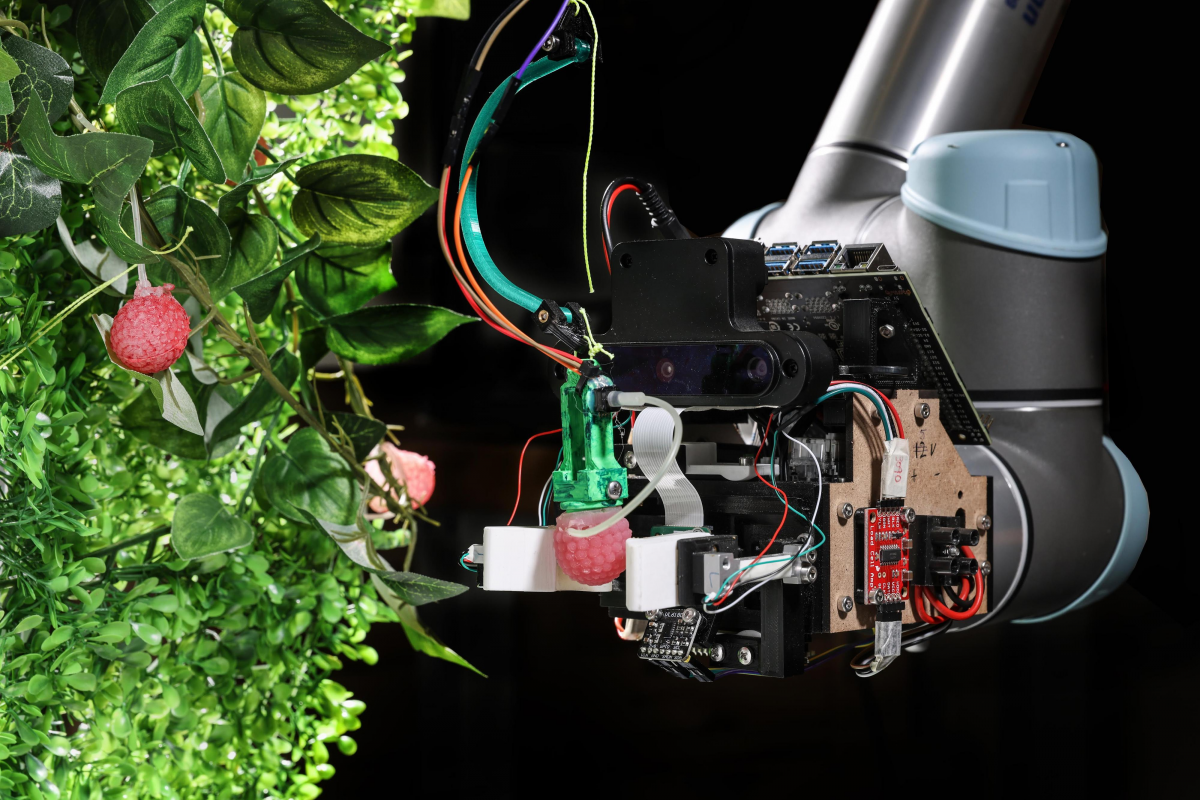Harvesting robots are becoming increasingly popular worldwide, especially for high-priced fruits, as they help replace missing workers. These robots can pick strawberries, tomatoes, apples, peppers, and kiwis using two different approaches. One approach involves shaking the tree or bush to collect the falling fruit, while the other approach involves using a gripper to pick the fruit, which is especially useful for delicate fruits. However, robotic grippers can easily destroy delicate fruits like raspberries.
To solve this problem, Kai Junge from the EPFL in Lausanne and his colleagues have trained a robot to handle raspberries using an artificial raspberry equipped with sensors. The artificial raspberry is made of a 3D-printed outer skin filled with liquid silicone. A fluidic sensor measures the external pressure force when gripping the fruit. The sensor raspberry is attached to a flexible, 3D-printed tendril using a magnet, and the distance between the two halves of the magnet determines the maximum pulling force required to detach the sensory raspberry from the tendril. By training the robot using this artificial raspberry, they were able to optimize the parameters for controlling the gripper.
The robotic gripper, which is mounted on a standard robotic arm, uses a Raspi camera to locate and approach a raspberry. Two soft silicone fingers then close around the fruit, and the robot starts pulling until the fruit comes loose. The controller ensures that the lateral force on the berry is relaxed without letting go of the fruit. The researchers conducted extensive testing on the physical twin to make the controller as universally applicable as possible, as field tests can be time-consuming and expensive.
Despite the training, the robot still faced challenges in finding raspberries hidden by tendrils, leaves, or other fruits, and in some cases, it did not have enough strength to remove the fruit. Another project by the start-up Fieldwork Robotics, founded by the agricultural robotics group at the University of Plymouth, also faced similar challenges when developing harvesting robots for raspberries. These robots initially took about a minute per berry but were able to pick a kilo of fruit per hour. The goal is to increase the picking rate to four kilograms per hour by 2023.
Overall, robotic harvesting is an evolving field, and while advancements have been made, there are still hurdles to overcome before these robots can be fully integrated into practical use in the agricultural industry.



